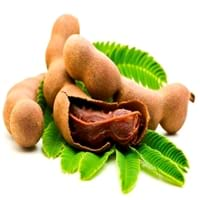Health Benefits
Cancer prevention, Heart care, Maintains healthy cholesterol level, Treatment of skin Diseases
Boosts immune system, Boosts respiratory health, Cancer prevention, Digestive aid, Piles treatment
General Benefits
Boosts immune system, Digestive aid, Helps in weight loss, Maintains healthy cholesterol level
Beneficial in improving nerve function, Protects against parasites and worms, Relieves pain
Skin Benefits
Anti-aging benefits, Skin rejuvenation, Treatment of skin diseases
Anti-aging benefits, Brightens and lightens complexion, Exfoliates skin, Hydrates skin, Treatment of dark spots
Hair Benefits
Protects hair, Regulates hair growth, Treatment of dandruff
Prevents hair loss
Allergy Symptoms
Hives, Inflammation of nose, Swelling of mouth, tongue or lips
Abdominal pains, Breathing difficulty, Dizziness, Eczema, Fainting, Hives, Itching, Nasal congestion, Swelling of face, Tingling sensation in mouth, Vomiting
Side Effects
Allergic reaction
Decrease in blood sugar levels, Induces acid reflux, Allergic reaction, Tooth decay, May form gallstones
Best Time to Eat
Along with meal, As a snack in the late afternoon, Don't consume at night and before bed, Don't eat after meal
Along with meal, As a snack in the late afternoon, Don't consume at night and before bed, Strictly avoid empty stomach
Vitamin B5 (Pantothenic Acid)
Vitamin C (Ascorbic Acid)
Vitamin K (Phyllochinone)
Phytosterol
Not Available
Calories in Fresh Fruit with Peel
Not Available
Not Available
Calories in Fresh Fruit without Peel
Calories in Frozen Form
Not Available
Calories in Dried Form
Not Available
Calories in Canned Form
Not Available
Not Available
Calories in Jam
Not Available
Type
Fruit vegetable, Tropical
Tropical
Season
All seasons
Spring, Summer
Varieties
Koqo, Tamaikora, Temaipo, Uto Kuro, Samoa, Buco Ni Viti and Kulu Dina
PKM 1, Urigam, Hasanur, Tumkur prathisthan, DTS 1 and Yogeshwari
Color
White, Yellow
Brown, Reddish-brown
Shape
Oval
Curving Cylinder
Origin
South Pacific
Africa
Soil Type
Loam, Sand, Sandy loam, Well-drained
Loam, Sandy, Sandy loam, Well-drained
Climatic Conditions
Humid, Rainfall, Warm
Humid to dry, Rainfall, Warm to hot climate
Facts about
- The milky sap of breadfruit tree is used as glue & bark is used to make papers.
- Breadfruit tree produces 1st fruit after 2-3 years from planting & remains productive for decades.
- The seeds of breadfruit are edible.
- Tamarind is used to prevent body odor.
- African children use the tamarind seeds in games.
- No cases of tamarind toxicity or allergy reported till date.
Top Producer
Jamaica
India
Other Countries
Africa, India, United States of America
Africa, Australia, Brazil, China, Mexico, Nigeria, Sudan, Taiwan
Top Importer
United States of America
United States of America
Top Exporter
Jamaica
Thailand
Botanical Name
Artocarpus altilis
Tamarindus indica
Synonym
Artocarpus communis or Artocarpus incisa
Tamarindo, tamarindus
Subkingdom
Tracheobionta
Tracheobionta
Division
Magnoliophyta
Magnoliophyta
Class
Magnoliopsida
Liliopsida
Subclass
Magnollidae
Rosidae
Genus
Artocarpus
Tamarindus
Species
A. altilis
Tamarindus indica
Generic Group
Mulberry
Tamarind Sub
Difference Between Breadfruit and Tamarind
We might think that Breadfruit and Tamarind are similar with respect to nutritional value and health benefits. But the nutrient content of both fruits is different. Breadfruit and Tamarind Facts such as their taste, shape, color, and size are also distinct. The difference between Breadfruit and Tamarind is explained here.
The amount of calories in 100 gm of fresh Breadfruit and Tamarind with peel is Not Available and Not Available and the amount of calories without peel is 103.00 kcal and 239.00 kcal respectively. Thus, Breadfruit and Tamarind belong to High Calorie Fruits and High Calorie Fruits category.These fruits might or might not differ with respect to their scientific classification. The order of Breadfruit and Tamarind is Rosales and Fabales respectively. Breadfruit belongs to Moraceae family and Tamarind belongs to Fabaceae family. Breadfruit belongs to Artocarpus genus of A. altilis species and Tamarind belongs to Tamarindus genus of Tamarindus indica species. Beings plants, both fruits belong to Plantae Kingdom.









